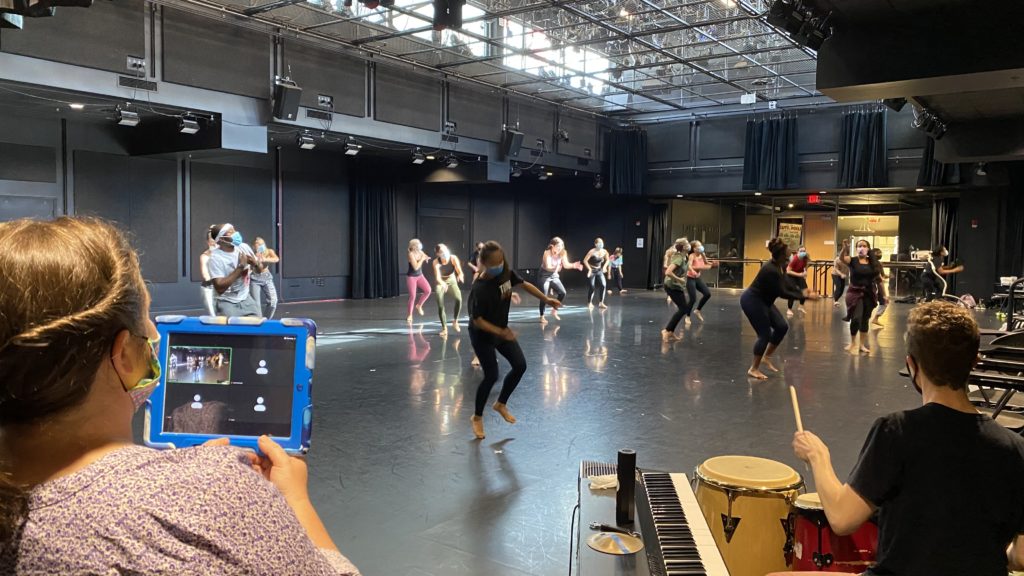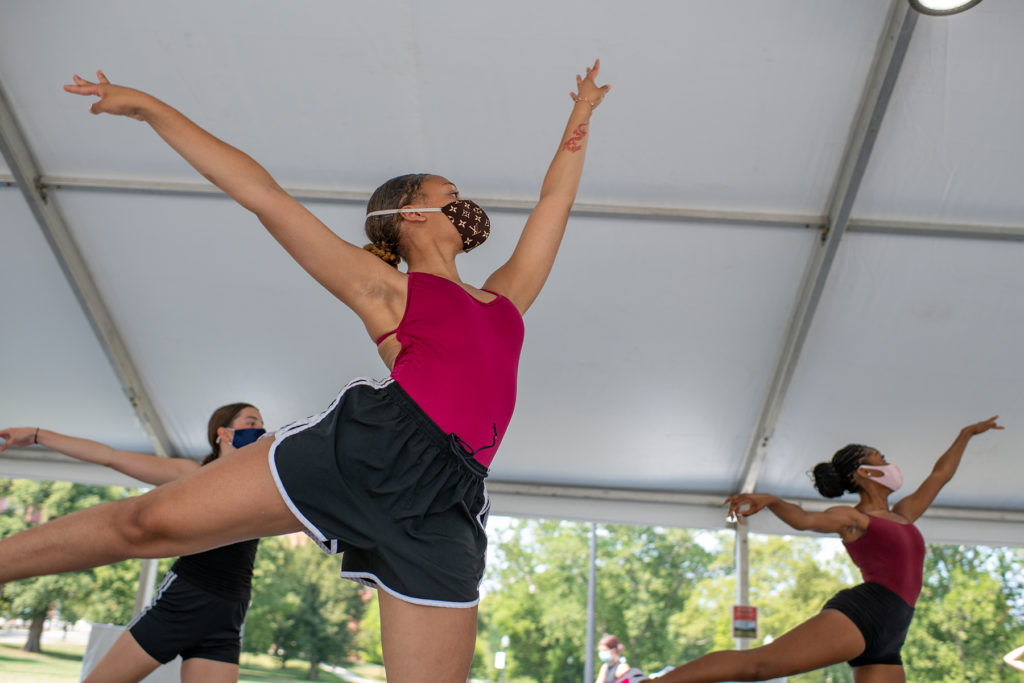
As college dance programs across the country begin to reevaluate and decolonize their curriculums, another part of the college dance experience requires the same attention: the audition process.
A dance program that equally prioritizes Western European and diaspora dance forms, for example, but still asks dancers to learn only ballet and classic modern phrase-work at an audition, isn’t offering potential students accurate expectations—or giving them a fair assessment.
The Pennsylvania Dance Education Organization recently held a webinar to discuss equitable processes for dance auditions and admissions, with The Ohio State University faculty member Dr. Nyama McCarthy-Brown and dance educator, scholar and consultant Dr. Takiyah Nur Amin as presenters. Here are four of their ideas that you can implement in your college’s audition and admission process.
Use backwards planning to determine what to include in your audition.
Amin encourages college educators to use their program’s learning outcomes to shape their auditions, rather than defaulting to older audition structures that typically ask auditionees to take only abbreviated ballet and modern classes.
“What do you want students to exit your program with, and how do you assess their readiness?” she asks. “You will hear faculty complain about students who come into their program not interested in community and collaboration. You didn’t tell them they had to do that!” Including an onsite writing sample, a group problem-solving exercise or even a short discussion with auditionees could allow you to assess their collaborative abilities.

Rethinking the content of your audition from a backwards-planning perspective will also give you the opportunity to reexamine what your program prioritizes. “Are you only auditioning to watch young people demonstrate proficiency in Western or historically privileged forms?” asks Amin. “And in so doing, are you not reinscribing hierarchies?”
Other alternative audition material might include exercises that assess students’ spatial awareness, for example, or their ability to generate movement or lead their peers. “Those are all skills that are necessary to have a life in the field but often don’t show up in the processes we use to assess our students,” Amin points out.
Revisit your recruitment practices.
Develop a relationship with the admissions team at your school, advises Amin. They’ll be able to provide you with important data—the average GPA or ACT score for an incoming first-year, for example—that can direct and drive your recruitment practices. “Dance departments need some sense of who is coming to their school,” she says, in order to shape dance recruitment materials for admissions offices to share with potential and accepted students—especially those who might spend their first years as undeclared majors. “Dance departments need to reach out and say, ‘Dance is a thing you can study here,’” says Amin.

Look beyond the low-hanging fruit, too, when it comes to regional canvassing. “Who knows that your program exists?” asks Amin. “Is it only the two performing arts schools you send materials to that are within 90 minutes of your campus? What about public access television or community programs? Who do you invite in to tour your facilities? If you want to have a relationship, it has to be cultivated.”
Make your virtual auditions equitable and inclusive too.
Amin believes that virtual auditions can create their own barriers for potential students, particularly if auditionees feel pressured to rent studio space for the audition. “People will assume the aesthetics of their space will matter in ways they shouldn’t,” she says. “Make sure you tell them, ‘It’s OK if you film this in your kitchen or backyard. We’re looking at you, not your living room.’”
Rather than requiring auditionees to learn a phrase during a virtual audition, you might try sending them the phrase ahead of the audition itself, as OSU did this year. That way, students can learn it at their own pace and on their own time, without having to figure out how to adapt it to their space on the fly.
At OSU’s virtual audition this year, students learned phrases for African dance, ballet and contemporary, and were also asked to share something they’d created. “We suggested that they could edit a film, or choreograph, or sing a song, or play an instrument, or write a poem—they could express themselves in whatever creative modality they wanted,” she says. “Their responses were varied, and it gave them opportunities to shine.”

Eliminate auditions altogether.
Amin encourages dance programs to consider doing away with an audition altogether. “I don’t know that we need to be auditioning people for access to high education,” she says. “I’m a much bigger fan of letting people come in and provisionally declare dance as their major, and then placing them in classes at appropriate levels when they come in, allowing them to move through a program and thrive, or choose a new program that’s better for them.”
After all, a dance degree is no longer a field-specific path for an undergraduate. “You have BFA graduates who work at the bank!” says Amin. “Students will have to live in a world that’s increasingly complex and nuanced, and dance is uniquely positioned to help them develop those skills.”




